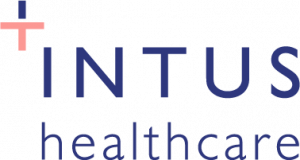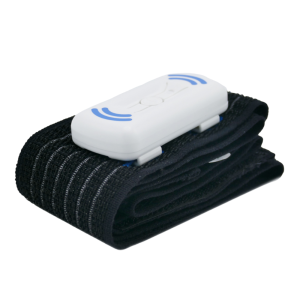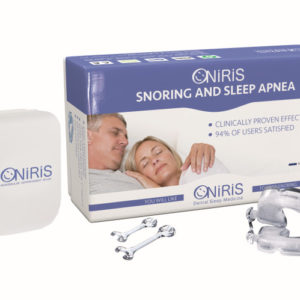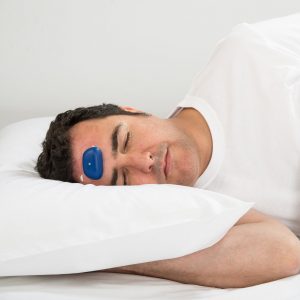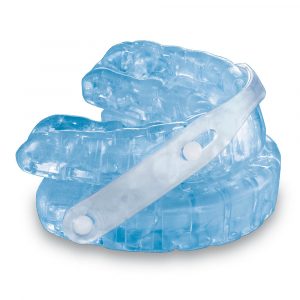Fact Checked
Intus Healthcare’s writers, customer service team, and sleep experts review and ensure this information is accurate.
Last updated on April 9th, 2024 at 10:10 am
Looking for an alternative to CPAP?
Experiencing quality sleep can be difficult for those who suffer from Obstructive Sleep Apnoea (OSA). Continuous Positive Airway Pressure therapy (CPAP) is the most common form of treatment used to treat Sleep Apnoea, but it is recognised that CPAP therapy is not for everyone. The good news is there are alternatives to using a CPAP machine, such as remedies and other treatments that are more cost-efficient and less intrusive.
Table of Contents
Why use an alternative to CPAP?
If you are having difficulty adjusting to regular CPAP therapy, you can investigate one of the alternative options here. All of our alternatives to CPAP can be helpful to people with less severe symptoms. Each product is clinically proven, but please check their suitability for your sleep disorder.
Issues and side effects can arise, making it difficult for some people to experience the full benefits of using a machine.
A handful of examples include:
- Physical reasons might make receiving the proper level of airway pressure difficult.
- A mask that does not fit securely over the nose and mouth.
- Air leaks caused by an ill-fitting mask.
- A dry nose, mouth, and throat after maximum levels of humidification.
- Red marks and skin irritation from a mask.
- Difficulty getting used to using the equipment.
- The cost of a machine, mask, and upkeep.
The good news is that doctors and sleep professionals will typically be able to provide you with several alternatives after your OSA is confirmed.
Understanding Sleep Apnoea
One of the critical indicators that we use in our sleep test report is the AHI. There are other indicators, but to illustrate a simple idea of your potential issue, I’m going to explain the AHI, which stands for the Apnoea-Hypopnoea Index.
The AHI is the number of apnoeas or hypopneas recorded during the study per hour of sleep and is generally expressed as the number of events per hour.
For example:
- None: AHI number under 5 per hour.
- Mild: AHI number between 5 to 14.9 per hour.
- Moderate: AHI number between 15 to 29.9 per hour.
- Severe: AHI number greater than 30 per hour.
Sleep Apnoea treatment without CPAP
If you cannot use CPAP or prefer not to use it, several other treatment options may be helpful in managing your Sleep Apnoea. These include:
Mandibular Advancement Devices (MAD)
One popular alternative is an oral dental appliance known as a Mandibular Advancement Device (MAD). This option consists of a mouthpiece that changes the position of your lower jaw by moving it slightly forward. The device is worn just like a standard mouthguard during the night. These devices are clinically proven to treat Sleep Apnoea and snoring.
The main intention of a MAD device is to allow your airway to expand, minimising airway closure and, therefore, providing your body with more oxygen. Each oral device is easily moulded around your mouth, so discomfort is rarely an issue. The appliance should also control snoring.
These devices can last for a couple of years if cared for properly and are especially helpful when camping or travelling, and you are away from mains power.
Mandibular Advancement Devices are a cost-effective alternative to CPAP if you cannot afford a machine or want to try other methods first. Learn about our different oral devices on our website.
Please note: These appliances suit those with milder forms of Sleep Apnoea.
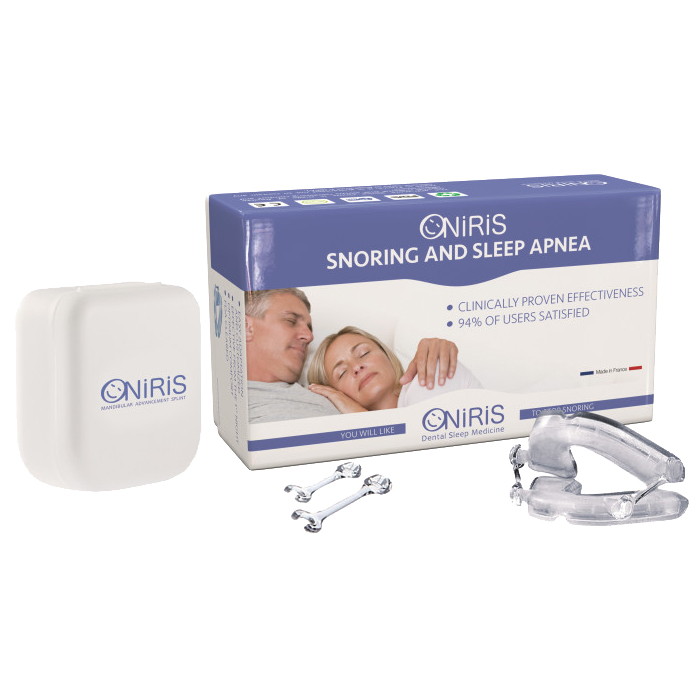
Oniris MAD
Clinically Proven Mandibular Advancement Device
Oniris is the leading off-the-shelf mandibular device for snoring and Sleep Apnoea, clinically proven in hospitals and clinics by sleep and ENT specialists to be as effective as custom-made oral appliances. The unique design provides an impression equivalent to laboratory-produced mouthpieces, allowing millimetre-precise adjustment and freedom to talk and drink naturally.
The device can be configured precisely to the wearer’s requirements. The lower jaw can be moved forward in 1mm increments, from 0mm up to 15mm. This allows more scope to tailor the comfort and level of therapy provided than you would typically find in an off-the-shelf device.
Oniris is supported by a 30-day Money Back Guarantee.

Somnofit MAD
A less invasive option for treating snoring & mild OSA
The Somnofit Mandibular Advancement Device is a proven anti-snoring mandibular advancement device that offers a snoring solution and an alternative to CPAP therapy for mild OSA sufferers. It works by moving the lower jaw forward and keeping it there while you sleep. By doing so, it opens up the throat to allow for greater airflow, reducing the chance of obstructions that lead to snoring and apnoea.
The Somnofit consists of two oral mouldings: one for the upper jaw and one for the lower. They are heated in water to soften the moulding material (thermoforming) and then bitten to create an exact fitting for your teeth.
The two mouldings are connected by a supple strap to keep them aligned as they need to be, ensuring that the lower jaw cannot be pulled downwards by gravity and will instead stay positioned forward for optimal airflow. Within a few minutes of the adjustment, you have a personalised device ready to use and reduce your snoring.
Who can benefit from using a MAD?
- Snorers
- Mild Sleep Apnoea (sleep study and ongoing medical supervision required)
- Mild-to-moderate Sleep Apnoea patients on the move, travelling, camping, boating, holidaying, etc., who prefer a temporary alternative to their usual CPAP therapy (professional medical consultation required)
- Bruxism (grinding teeth), migraines due to jaw tensions
Not suitable for people who:
- Wear full or partial dentures
- Have mandibular (lower jaw) pain
- Have loose teeth or advanced periodontal disease
- Have upper or lower jaws with fewer than ten teeth
- Suffer from severe or central Sleep Apnoea
- Are under 18 years old
Positional Therapy
Sleeping on your back can worsen the effects of Sleep Apnoea due to the impact of gravity upon the airway. This is why side sleeping is often recommended.
Sleeping on your side will not eliminate the effects of OSA, but it can still alleviate many of the associated symptoms.
Those diagnosed with positional Sleep Apnoea should try positional therapy as an alternative to CPAP. A physician or a sleep specialist can determine if side sleeping is a viable option for you to consider.
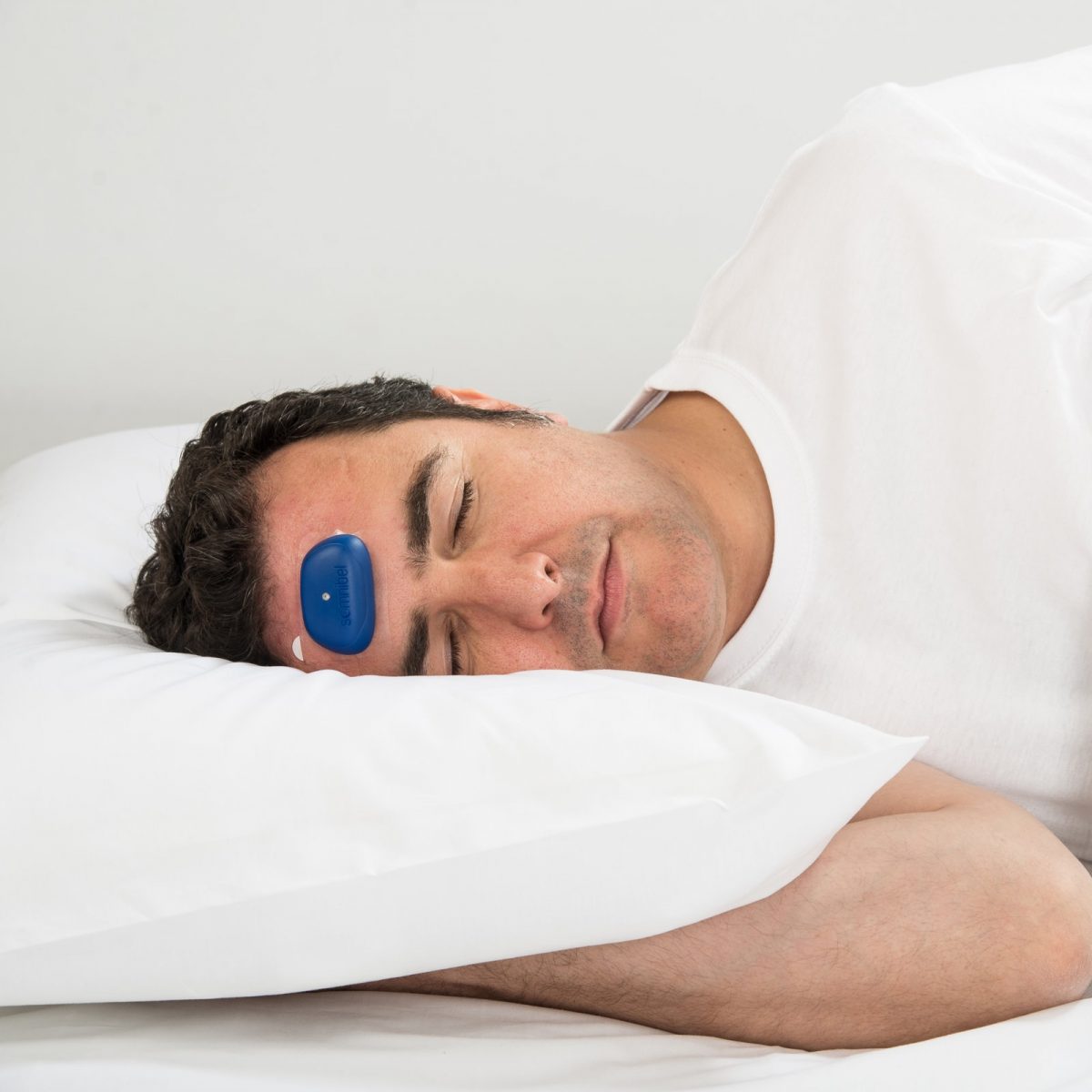
Somnibel Positional Therapy
Somnibel Positional Therapy provides a simple, comfortable solution for positional snoring and Sleep Apnoea.
The training device is designed to help you to sleep on your side. The Somnibel sits on your forehead while you sleep and vibrates when you roll over to sleep on your back. The vibration encourages you to turn back onto your side to prevent breathing pauses.
When purchasing the Somnibel, you receive a 30-day satisfaction guarantee or your money back.
You may also find other forms of positional therapy that can be attached to your waist or back to prevent you from sleeping on your back, preventing snoring and apnoeas. We offer a selection of snoring products; click the button below to see our options.
Target the root cause
The world’s first clinically proven daytime therapy for mild Sleep Apnoea.
Target the root cause – not the symptoms with eXciteOSA. Sleep apnoea and snoring are problems for many people whose tongue muscles relax during sleep, causing partial airway collapse. eXciteOSA® is the world’s first therapy to target the root cause of this problem by improving the tongue’s muscle tone. eXciteOSA is a convenient daytime therapy for noticeable night-time results.

eXciteOSA
eXciteOSA is the world’s first daytime therapy proven to improve tongue muscle tone and endurance, known to be the root cause of sleep apnoea and snoring. It uses safe electrical currents to stimulate and improve muscle functions in the mouth and tongue, effectively giving them a “workout”.
After using for 20 minutes per day for six weeks, the tongue muscle no longer blocks the airway at night, allowing for a restful night’s sleep – with no CPAP or mouthguard required.
Once the initial six-week period is complete, you simply use your eXciteOSA twice a week for 20 minutes during the day to keep your tongue muscles toned.
The eXciteOSA device will deliver small electric currents to your tongue through the mouthpiece, which will stimulate the tongue muscle and improve its tone. The improved tone of the tongue muscle will help in keeping the breathing passage open during your sleep and reduce the vibration of the throat region.
Uvulopalatopharyngoplasty Sleep Apnoea Surgery
Surgery is often considered a last resort if all the alternatives fail to produce satisfactory results.
However, it is critical to mention that surgery is not always successful and that you will likely suffer from significant discomfort following any procedure.
One of the most common methods is to employ a uvulopalatopharyngoplasty (UPPP) technique. This procedure essentially involves the widening of your airway. Certain tissues, such as the soft palate and your tonsils, may be removed during this process.
This is a rather complicated process, and as with any surgery, there are certain risk factors, such as infections, once it has been completed. It can also be extremely difficult to swallow for a significant period of time post-surgery. That is why surgery is not frequently recommended by the National Health Service (NHS).
Speaking with a trained professional is encouraged if you are considering this option, as you should always be aware of the associated risks.
Acupuncture
Acupuncture has been known to alleviate the symptoms associated with many chronic conditions, and it is thought that manual techniques can significantly impact Obstructive Sleep Apnoea.
Chinese clinical trials have pointed to some positive effects, although the NHS does not currently recognise this practice as an effective alternative. Research has yet to provide concrete results, but acupuncture could be an interesting option to explore further if you have used it in the past.
Implants for Sleep Apnoea
Several types of implants can be used to treat Sleep Apnoea. These include:
- Hypoglossal nerve stimulation implants: These implants use electrical stimulation to stimulate the hypoglossal nerve, which controls the muscles in the tongue and throat. This can help to keep the airway open during sleep and reduce the occurrence of Sleep Apnoea.
- Upper airway stimulation implants: These implants use electrical impulses to stimulate the muscles in the upper airway, which can help to keep the airway open during sleep.
The implants resemble a pacemaker and can be controlled remotely before sleep.
It’s important to note that these implants are usually only used as a treatment option for people who have not responded to other treatments, such as Continuous Positive Airway Pressure or mandibular appliances.
How to cure Sleep Apnoea naturally at home without CPAP
There is no cure for OSA. However, lifestyle adjustments can help to manage your symptoms. Although CPAP therapy is by far the most effective and GOLD standard treatment for OSA, some people like to consider natural home remedies first. Sleep Apnoea treatment without CPAP requires a commitment to lifestyle changes. These changes will improve your long-term health as well as alleviate your symptoms.
Here are some natural Sleep Apnoea remedies:

Exercise and weight loss
Sleep Apnoea is most common in those who are overweight or obese. Excess weight increases the fat around your neck, putting more pressure on your airway. Lowering the body mass index (BMI) is recommended for overweight people. Holding excess weight will often exacerbate the symptoms of Sleep Apnoea. People with a larger tongue are also at a higher risk of developing OSA.
Regular exercise can help you maintain a healthy weight, reduce the fat around your neck, and help keep your airways clear. In some cases, weight loss can eliminate all Sleep Apnoea symptoms (depending on OSA severity), but these symptoms can return if the weight does. If you are obese, speaking with a nutritionist/dietician or learning more about your options is always wise.
Yoga
One of the best ways to incorporate exercise into your day that benefits your Sleep Apnoea is Yoga. There is some evidence that yoga may be helpful in managing Sleep Apnoea and improving sleep quality(1). Yoga is a type of physical and mental practice involving postures, breath control, and meditation techniques. Yoga does not cure Sleep Apnoea but can help reduce your symptoms as breathing exercises can strengthen your airways.
Yoga is thought to have several benefits for physical and mental health, including stress reduction, improved flexibility, and better sleep. Yoga also holds benefits to help with back pain and arthritis. Try some of these yoga poses:
Cat cow pose
Seated twist
Locust pose
While yoga may be helpful in managing Sleep Apnoea and improving sleep quality, it is not a replacement for medical treatment.
Quitting smoking and consuming less alcohol
Both nicotine and alcohol disrupt your sleep cycle. The nicotine from smoking causes swelling and inflammation in your airway, worsening your Sleep Apnoea. Those who smoke are three times more likely to develop Sleep Apnoea than those who don’t smoke. Studies have found those who smoke have a higher Apnoea Hypopnoea Index (AHI) than those who do not(2).
Alcohol relaxes your throat muscles, leading to snoring. Alcohol inflames your airways, making breathing difficult while you sleep – causing apnoea’s (breathing pauses). Limiting or quitting smoking and alcohol consumption can help manage your OSA.
Can vaping cause Sleep Apnoea?
Yes, like cigarettes, vapes also deliver nicotine to the body. Therefore, you are still at risk of Sleep Apnoea if you use an e-cigarette.
Playing the Didgeridoo
Although this might initially appear to be more of a myth than a reality, a handful of medical studies have found that playing the didgeridoo before going to sleep can have beneficial effects if you suffer from a moderate form of Sleep Apnoea(3).
The theory behind these observations arises from the fact that types of OSA can be caused by weak muscles found within the neck lining. Playing this type of wind instrument can strengthen these areas, allowing your airway to remain open for extended periods when resting.
Once again, it should be stated that this is not a replacement for CPAP therapy.
Choosing the right CPAP alternative
The efficacy of these recommendations will depend upon the severity of your OSA. After all, mild cases can often benefit from a handful of lifestyle changes or the use of devices such as oral appliance devices.
To make the best decision, carefully weigh each alternative and speak with your healthcare provider. They will be able to guide you towards the best Sleep Apnoea remedies and treatments that could provide noticeable results.
Treating Sleep Apnoea without CPAP is not uncommon; contact us for help and advice.

In-Home Sleep Test for Sleep Apnoea
Take a simple In-Home Sleep Apnoea Test if you are showing signs of Sleep Apnoea and have not yet confirmed it.
You will receive your results within two working days. Your results will include a detailed report from our sleep experts explaining the severity of your condition and the most effective treatment for you.
REFERENCES
- Kumar, V., Malhotra, V. and Kumar, S. (2018) ‘Application of standardised yoga protocols as the basis of physiotherapy recommendation in treatment of sleep apneas: Moving beyond pranayamas’, Indian Journal of Otolaryngology and Head & Neck Surgery, 71(S1), pp. 558–565. doi:10.1007/s12070-018-1405-5.
- Ioannidou, D. et al. (2021) ‘Smoking and obstructive sleep apnea: Is there an association between these cardiometabolic risk factors?—gender analysis’, Medicina, 57(11), p. 1137. doi:10.3390/medicina57111137.
- Puhan, M.A. et al. (2005) ‘Didgeridoo playing as alternative treatment for obstructive sleep apnoea syndrome: Randomised controlled trial’, BMJ, 332(7536), pp. 266–270. doi:10.1136/bmj.38705.470590.55.
